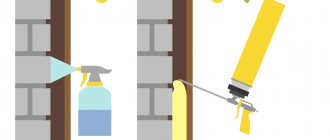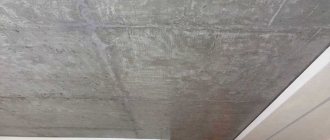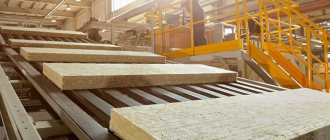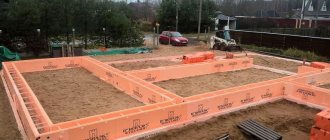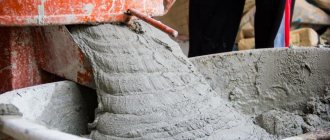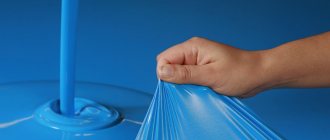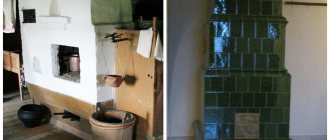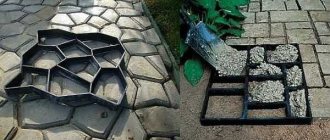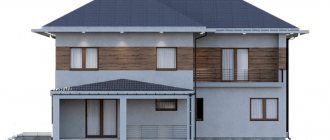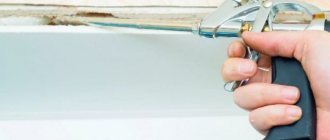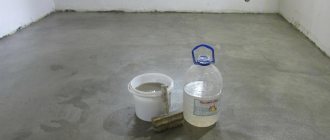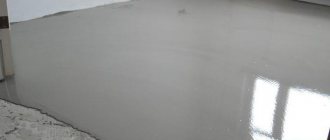Polyurethane foam is a popular building material. All types of work require a stage where this material is used. For example, this is the installation of plastic windows or doors, installation of partitions, and so on.
Polyurethane foam has a lot of positive properties - it glues surfaces and adheres to most other materials. Due to expansion, even a small volume fills any hole, gap or crack. With its help, a high-quality fastening is created and the element is fixed at the desired point.
Polyurethane foam is also relevant for working with penoplex.
Gluing penoplex - selecting glue
There are a large number of materials on sale for thermal insulation work, among which penoplex occupies a special place due to its advantages. The material provides good surface insulation and is easy to work with. But it is important to choose high-quality glue for penoplex so that the installation result lasts for many years. It is the adhesive solutions for this material and their features that will be discussed in the article.
Is it possible to glue on polyurethane foam?
If penoplex is placed on polyurethane foam, the connection will be quite strong. To use foam on the floor, you first need to make a self-leveling concrete screed. The main problem is the high price of construction foam.
Due to the long-term expansion of the foam during gluing work, it must be pressed all the time until installation is completed.
Preparing tools
If you are concerned about the question of what kind of glue to glue foam to metal, then you can first start choosing the composition. Depending on which one you choose, you may need:
- drill;
- putty knife;
- comb;
- perforator;
- bucket;
- wide brush.
If you prefer a dry mixture, you will need a drill with a mixer attachment. To apply this glue, you can use a spatula in the form of a comb, but you will need a small spatula as a handy tool for work; with its help you can remove excess glue.
Preparatory work before installation
If you are thinking about how to glue polystyrene foam to metal with polyurethane foam, then it is important to know that this material can be fixed to almost any metal. Among other things, you can use almost any glue or putty. However, you cannot purchase a composition whose ingredients contain gasoline, acetone or any other solvent. The slabs will collapse.
Another mistake that craftsmen often make is not using enough adhesive. Such compounds must be applied to the back side of the slabs; this must be done in 5 places or more. First, the mixture is applied in the corners, and then in the center. Before gluing foam plastic to metal, you need to remember that saving is inappropriate here. To do this, some apply the composition only in three points; this is incorrect and violates the technology.
Before gluing metal and foam plastic, the surface should be prepared; it should be cleaned of dust, old paint and varnish coatings, dirt and rust. You can use an oscillating or belt sander for this. After such cleaning, the base is degreased with any convenient means. Gluing is not such a quick process; sometimes it is necessary to ensure that the material is fixed until the glue hardens. At first, the thermal insulation may slide under its own weight, so it must be supported from below with a board or plywood.
Types of glue for penoplex
The choice of adhesive composition depends on the operating conditions. The following types of glue are used to attach the boards:
- cement;
- polyurethane;
- polymer;
- waterproofing.
1. How to glue penoplex to a concrete wall? For example: “T-AVANTGARDE”, a sticky substance based on cement, allows you to perform this work as efficiently as possible.
Cement compositions are inexpensive and effective when penoplex is used for outdoor work. This composition is excellent for attaching slab insulation to concrete, sandstone and aerated concrete.
Cement-based adhesive compositions are sold in the form of a bulk mixture packaged in paper packaging. After combining with water, the cement composition can be used for its intended purpose.
2. For craftsmen who are interested in learning how to attach penoplex to a brick wall, we can advise using polyurethane-based glue, for example: Ceresit CT 84.
Polyurethane compounds are ideal for attaching insulation to brick surfaces and wooden walls made from flat types of lumber.
Polyurethane adhesive can also be used to insulate concrete walls, but the cost of installation in this case will increase significantly compared to work done using cement-based material. The sticky substance is sold ready-made in aerosol cans with a capacity of 750 ml.
A special feature of using this type of adhesive is its rapid drying. Immediately after applying the substance, the foam board should be installed without delay.
3. Polymer glue (“Avangard-Ku”) is used to quickly fix penoplex to various surfaces.
Can be used for attaching slabs to the ceiling surface.
4. Waterproofing adhesive (“Bitumast-Bitumast”) is made on the basis of bitumen, therefore this composition is used for installing slab insulation in rooms with high air humidity.
Each type of glue has both positive qualities and disadvantages. When choosing a sticky substance, you should select the composition depending on the working conditions. In addition, you should purchase products from manufacturing companies that have been selling such goods on the Russian market for a long time.
The best manufacturers of penoplex glue
For reliable fastening of the material to the insulated surface, it is recommended to purchase the following products - the glue of this company is produced on the basis of a cement mixture and is produced in dry form in bags weighing 25 kg.
The substance is ideal for outdoor use. Due to the greater resistance of the composition to low temperatures, high humidity and other unfavorable natural factors.
2. “Teploskrep De Luxe” - a composition based on high-quality cement, most often used for insulating building facades.
The glue can also be used for interior work, because all components of this building material are safe for human health.
3. “Kleiberit 569” - polyurethane adhesive made in Germany.
Excellent for interior and exterior work, as well as installation of foam boards in rooms with high humidity.
4. “Penoplex FastFix 750 ml” - based on polyurethane, which can be used to fix slab insulation to concrete, wood, brick or natural stone.
In addition to installing penoplex on the walls of a building, this composition can be successfully used to insulate the foundation, roof and basements. The product is moisture resistant and can be used in damp areas.
5. “Technonikol 500 Professional” is a universal polyurethane adhesive foam that is suitable for fastening various types of materials, including penoplex.
Insulation can be installed using TechnoNIKOL 500 Professional both indoors and outdoors. The product has excellent adhesion to concrete, metal and wood, and can be used to glue insulation together.
Stamps
Let's consider the most famous brands of adhesives for penoplex.
Tytan
Titanium is a universal adhesive produced in Poland by Selena.
To work with insulation, it is better to use the Professional Styro 753 series. The composition is resistant to the influence of precipitation and is heat-resistant, so thermal insulation can be carried out outside. The product ensures maximum adherence of the insulation to the base.
Ceresit
Using Ceresit products you can attach insulation to walls, ceilings and other surfaces.
Moment
Fixes penoplex to any base. The moment is also used to create a reinforcing mesh. The composition has good adhesive characteristics, is frost- and moisture-resistant, elastic, does not require shrinkage, and can withstand changes in temperature.
Master termol
- It has a cement-sand composition, which makes it easy to attach penoplex to concrete, cement and lime bases.
- Provides good adhesion to polystyrene foam.
- Very elastic composition.
- Immune to frost.
- Environmentally friendly composition.
Profline 3K-45
The adhesive contains components that increase the level of adhesion of penoplex to any base. Can be used on plastered, cement and concrete substrates.
The adhesive seam is not susceptible to moisture, cold, or mechanical damage.
Penoplex Fastfix
Penoplex Fastfix is an adhesive foam for penoplex, which is used during thermal insulation work. You can use foam to attach insulation boards to concrete ceilings, ceramic tiles, plasterboard, aerated concrete and brick. Penoplex Fastfix 750 ml is available in the form of an aerosol of the appropriate volume. Color – light blue.
The glue has good adhesive characteristics in relation to most building materials, including wood, plaster, expanded clay concrete blocks, cork, cellulose, and metal.
With foil material, the composition does not provide the necessary adhesion; it is also not suitable for gluing polyethylene, Teflon, and silicone surfaces.
The mixture adheres to the plane in 10-12 minutes, within half an hour it is still possible to cut the structure, and complete hardening occurs within a day. Can be used indoors and outdoors. Often used for thermal insulation of loggias and balconies.
How to prepare the surface
No matter what adhesive is used, the preparation process is always the same. If the metal is not properly processed, then no glue will provide reliable fastening of the foam.
Materials and tools for work:
- Metal brush . Used to clean the surface and remove rust and old paint residues. Instead of a hand tool, you can use a power tool - a drill or grinder with a special metal brush;
A special wire brush will help you quickly remove rust and paint from the metal surface.
- Paint remover . It is used if there are several layers of old paint on the surface, which does not adhere very well and may peel off later. The composition is easy to apply, but is toxic and requires compliance with safety measures;
Paint remover in aerosol packaging is very convenient to use
- Solvent. Used to degrease surfaces. Personally, I use the P-646 composition; it is inexpensive and well suited for preparing metal for further processing;
Solvent R-646 is used for cleaning and degreasing metal in preparation for insulation
- Composition “3 in 1” for metal surfaces . A special composition consisting of paint, primer and anti-corrosion treatment. After application, the surface will be reliably protected from rust for many years. If you have metal without pockets of corrosion, then you can use ordinary primer for metal, its price is much lower;
Special paints with anti-corrosion additives are the best preparation of metal for insulation
- Brush or roller . Used for applying paint. For large, flat areas, a roller is more suitable. For designs with many curves and angles, it is better to use a brush.
The brush should have thick bristles to ensure high-quality application of paint or primer to metal
Metal surface preparation:
The paint can be applied with a sprayer if available, but you can also use a brush.
Mounting features
Izolon (penofol) is covered with aluminum foil, which allows for the best possible retention of heat. Its adhesion to the surface of the insulation can be chemical or physical, that is, cross-linked. Izolon may have additional characteristics such as thickness or color. If you are looking for win-win insulation for your home, then this option will be the best choice. It is also perfect for insulating elements of air conditioning systems, pipelines, and production mechanisms. Foamed polyethylene is used for both external and internal work. The material has quite significant advantages.
Among them are:
- small thickness;
- ease of installation;
- environmental cleanliness.
Installation of insulation is possible without the use of special tools. Working with foamed polyethylene does not require additional protection of the respiratory tract and skin. The material is so light that the load-bearing capacity of the glue will not be critical.
How to choose for different surfaces
For each type of surface, you need to choose your own suitable type of substance to glue foam boards:
- For outdoor work, it is better to choose dry mixtures that have good adhesion to stone, brick and plaster. When choosing, you need to pay attention to the packaging, namely, its integrity and the indicated release date. The seal must be maintained.
- To ensure waterproofing of seams and surfaces, you need to choose bitumen or polymer adhesive.
- Polyurethane types are mainly used for reinforced concrete and wood.
- Liquid nails, polyurethane foam or silicone-based sealant provide good adhesion to metal bases.
- To install penoplex on plastic, corrugated board or plywood, it is also better to use liquid nails.
Note! If the finishing of heat-insulating materials is carried out both on the walls and on the ceiling, then for these purposes it is better to choose polymer compounds.
Polyurethane adhesives are excellent for installing materials indoors, as well as for creating floor thermal insulation. To glue penoplex outdoors, mineral adhesives are suitable.
Adhesive foam is considered a universal material used for finishing walls, indoor and outdoor surfaces. Suitable for working with floors and ceilings.
Installation Tips
Installing penoplex is not a tricky matter, since there are different types of adhesive composition, and accordingly they are applied in different ways. It is better to apply mineral glue with a notched trowel with a comb height of 5 - 10 mm.
The polymers are applied in a random pattern, with a continuous strip drawn along the perimeter with a gap from the edge of 10 - 20 mm. There is also a mop method, which is used for unloaded surfaces.
The choice of method for applying glue to foam boards depends on the degree of surface congestion and the type of composition
Before gluing the penoplex to the walls, a starting support strip is mounted below. For facade work and foundation insulation, a metal profile with an anti-corrosion coating is used. In interior spaces, any support is attached to the wall, for example, a wooden block or lathing.
When producing facade insulation, the starting strip must be made of stainless steel or have an anti-corrosion coating
Important! When working with any glue, before installing the foam board, the base must be covered with primer and dried.
Waterproofing compounds
This group of materials that will glue penoplex includes adhesives based on bitumen, acrylic, rubber, they are produced in the form of mastics. You can’t buy simple ones, they corrode the material, just like waterproofing agents with petroleum products. The best way to glue penoplex is Bitumast XPS. The mastic does not include solvents, sets in 2 days, and has a high peeling force of 500 kPa.
Acrylic adhesives can easily attach penoplex to wood, concrete, brick, connect penoplex to penoplex, and glue penofol to penoplex. They are suitable for interior and exterior work and have very low consumption. Bitumen mastics have the most pronounced waterproofing properties and are resistant to low temperatures.
What's wrong with it
Even if you follow all the technology requirements and these tips, it is difficult to avoid the disadvantages of using polyurethane foam.
Gluing foam takes much longer and requires more labor.
A gradual increase in the volume of foam that continues after application leads to deformation of the sheets, uneven surfaces, and the formation of gaps.
Repeated application increases the consumption of the adhesive base.
When choosing foam for installation, evaluate the advantages and disadvantages of each, including ease of use and cost.
Insulating a house with polystyrene foam places high demands on the compounds used. The adhesive and binding element must ensure good adhesion (adhesive strength) and durability of use, and the application technology must ensure the selected foam.
For reviews of attaching polystyrene foam to foam, watch the video:
Types and names of adhesives
The mass of penoplex is small. A pack of wall blocks, for example, weighs about 9 kilograms. The package contains 8 sheets with a total area of 5.5 squares. It would seem that a weak glue is enough. However, you need to take into account the weight of the entire insulation system along with dowels, corners, fiberglass mesh, and plaster. The glue should hold all the thermal insulation.
Adhesive for penoplex can have a different base. Hence the division by composition. Happens:
- Mineral. Often these are silicate compounds. They require a silicon-oxygen radical. Silicon in the periodic table is called silicium. Hence the name of the connections. In everyday life, glass is silicate. There are also wallpapers made of silicon fiber and mineral wool for insulation.
Mineral adhesive is only suitable for dry surfaces. High humidity leads to instant hardening of the compositions.
- Polyurethane. Urethane elastomer consists of an ether complex. The first polyurethane was obtained in 1937 from complex ones. Simple ones began to be used in the 50s of the last century. Then polyurethane became popular and available.
An example of polyurethane adhesive is polyurethane foam. It is one-component and immediately ready for use. There are also two-component options. They require mixing before use.
Adhesive for penoplex ceresit
Mixing different polymers in different proportions and under excellent conditions makes it possible to make multifaceted adhesives. Among them there are workers at sub-zero and only positive temperatures, fastening all kinds of surfaces, shrinking and non-shrinking.
- Polymeric. The concept is expanded, since polyurethane is also a polymer, since the atoms in the substance are arranged in a long chain. Its links are repeated. However, polyurethane glue takes time to harden. Most polymer compounds set instantly. Hence, for example, the brand name “Moment”. The brand's adhesives are odorous. Therefore, polymer compositions are used mainly outdoors.
There are also bitumen-based adhesives. They are waterproofing. Hence the division of compositions according to purpose. It’s not enough to fix the penoplex. Sometimes it is necessary to prevent water penetration or molding of the base. Conventional adhesives cannot cope with these tasks.
Based on their intended purpose, trains are also divided into outdoor and indoor. This is due to the areas of application of penoplex itself. They insulate both indoor and façade walls. The material is also suitable for roofs and foundations. Sometimes raw materials are used to insulate heating mains and elements of highways.
Penoplex adhesive for exterior use is usually mineral. In addition to compositions based on silicon oxide, by the way, there are cement ones. They also belong to the mineral category, since cement is made from crushed crushed stone. Choose one consisting of alite, belit, aluminates. These are all minerals and rocks.
Penoplex is used for external insulation of houses
For external insulation, mineral mixtures are preferable, since penoplex is often attached to concrete bases. With them, adhesives of this category provide maximum adhesion - penetration into the materials being bonded.
Accordingly, a good coupling is obtained. This is ideal. In fact, a pore-closing primer base is required. Without it, concrete will “suck” moisture from a mineral mixture diluted with water. Once it becomes dry again, the glue will not be able to properly secure the penoplex.
Indoors, penoplex is placed on polymer adhesive. Accordingly, the mixtures are based on artificial and natural rubbers, acrylic, and polyvinyl chloride. They ideally adhere to metal surfaces, plastics, glass and other low-porous materials.
Some polymer adhesives, for example acrylic, are universal. These are suitable for both interior and exterior work. Acrylic also waterproofs.
Taking into account the difference in adhesive compositions, their strengths and weaknesses, insulation manufacturers have released adhesive . Penoplex is attached to it within 7 minutes. After the first 2 slabs are pressed to the base. The remaining 5 minutes are spent on final fixation of the insulation.
Disc dowels are durable for a long time
The use of disc-shaped dowels is justified in the case of a large insulation area or uneven façade surfaces. For fastening to dowels you need: a hammer drill (impact drill), a drill of the appropriate diameter and length, and a hammer. Holes are drilled with a recess of 50-60 mm into the base. The holes are filled with polyurethane foam. Then the dowel is driven in with a hammer so that the dowel fungi do not protrude above the surface of the slab. It is best to use dowels in combination with metal screws to increase the reliability of the connection. Installing 5 dowels per slab is sufficient. Adjacent sheets are fastened with one dowel. It must be installed in the seam between the slabs.
Technical characteristics of penoplex material
Let's consider what useful qualities this extraordinary product has. Here are some features of penoplex:
- resistance to chemicals;
- reduced thermal conductivity;
- poor moisture absorption ability;
- fire resistance provided by the fire retardant included in its composition;
- the product is absolutely not susceptible to aggressive biological factors.
It is obvious that due to its beneficial properties, this insulation material is exceptional.
Properties of foam plastic
Correct fastening of foam sheets at joints.
In addition to resistance to stress, moisture resistance and low breathability can be noted. Polystyrene absorbs water only in microscopic doses. Considering these properties when insulating basements, foam plastic boards can be glued without damage to themselves, they are able to be in direct contact with the ground, do not decay, and mold and mildew do not form on them, no matter how damp the basement may be.
It is impossible not to note such useful properties as soundproofing, environmental friendliness, durability and low flammability. Foam plastic is not subject to deformation and change in size when interacting with dampness or under the influence of temperature factors. When covering external walls with it, it does not warp from heat and sunlight and does not deteriorate from constant contact with moisture. It is not subject to freezing and dampness. Now the popularity of this building material becomes clear.
Polystyrene foam has a number of properties that make working with it a little more difficult.
It has low mechanical strength, therefore, if you decide to glue polystyrene foam, close attention should be paid to the smoothness and evenness of the surface on which it will be attached. Protrusions and significant level differences will provoke fractures in the material
Polystyrene foam is easily destroyed upon contact with nitro paint and paints and varnishes, so you need to pay special attention to the choice of the composition with which you will glue. https://www.youtube.com/embed/LMQsSpLU04w
Types of glue for penoplex
There are several types of glue for attaching foam sheets. Each one has different grip quality. The strength of the insulated layer and durability depend on this. Each type of adhesive composition on the packaging contains information (instructions) with technical data. These include:
- Temperature parameters that must be observed during work and operation.
- Air humidity parameters.
- Type of plane on which the fastening will be made.
There are several groups for the distribution of adhesives for penoplex:
- Mineral adhesive containing cement.
- Gypsum is used for dry rooms.
- Waterproofing, which protect surfaces from moisture penetration. These include bitumen mastic.
- Polymer composites – Moment, Emfikol.
Often there is a need to glue penoplex together. Any type of glue, also universal, can cope with this task. But the main factor is the absence of acetone and gasoline in these masses.
For interior work
The most common foam adhesive for interior work is liquid nails. It is sold in convenient tubes, making application easy. To increase adhesion, it is recommended to apply it over the surface in a serpentine manner. After 20 seconds, the first setting is observed.
Compared to other means, it is considered more expensive.
To metal
Polyurethane foam can handle gluing polystyrene foam to metal. Its features include compaction, insulation, and improved adhesive qualities. Glues in areas where very careful adhesion is not required. Convenient to use as it is sold in cylinders. Economical consumption.
Craftsmen also recommend fastening to metal bases with liquid nails. With their help, the work process time is reduced. Fixation between metal and plates occurs quickly, but the strength is lower than when using polyurethane mixtures. It is permissible to combine two types of adhesives. In this case, there is no need to make supporting supports.
To a concrete wall, floor
To fix expanded polystyrene to a concrete wall or floor, mineral adhesive is often recommended. It is presented as a dry powder, which is diluted with water, subject to the proportions specified in the instructions, to the desired consistency.
- Increased degree of adhesion.
- Suitable for different surfaces.
- High plasticity.
- Economical to use (a thin layer is enough for durable fastening).
- No shrinkage. After complete drying, the layer remains at its original thickness.
- Frost and moisture resistance.
To evenly distribute the mass over the plane, the use of a notched grater is required.
For outdoor use
For external insulation, the use of dry adhesives is recommended. They provide high adhesion to brick and stone substrates. Even with plastered ones.
After mixing, the composition must be used within the allotted time, which is specified in the instructions.
Frost-resistant
Often in construction, for external insulation with penoplex, bitumen mastic adhesive is used. This product is frost-resistant, while maintaining its original properties. The product can be used as a direct adhesive when gluing whole sheets, or when sealing seams between them. In addition, it has hydrophobic properties.
The mass is distributed using a spatula or a spatula.
To the tree
Polyurethane glue is ideal for attaching boards to wood. It is produced in cylinders, which makes application easier, with a capacity of 750 ml.
A distinctive quality is quick drying. Therefore, after distributing the adhesive mass, the slab is immediately installed in place and adjusted.
We recommend watching the video:
Conclusion
Now you know which Penoplex glue is best to use in your case. I recommend watching the video in this article, and if you have any questions, ask in the comments.
| The composition is excellent for attaching Penoplex to difficult surfaces . Plywood, corrugated sheets, plastic - you can attach insulation to all these bases with liquid nails. |
| Gluing is simple and quick . A small amount of liquid nails is applied in dots or lines to the base, then the sheet is pressed for 10-20 seconds. |
What are the advantages of using foam in the case of penoplex?
Penoplex is used as a soundproofing material, and polyurethane foam is used to blow in the seams between the plates. At the same time, it qualitatively seals the seam. Another useful function offered by foam is gluing the foam board to surfaces, even vertical ones.
Even an inexperienced builder can do this kind of work. The slabs are glued unnoticed, however, the penoplex is securely fixed and they proceed to the next stage.
Application of foam with penoplex
Using this product instead of glue will help save money, applying the foam is much easier and requires less time to dry completely than glue. The use of foam is in no way inferior to specialized glue in terms of adhesive properties. Why do they buy it to simultaneously use it both for gluing penoplex and for blowing in seams and joints.
Reasons for choosing polyurethane sealant
When purchasing foam, it is once again checked for the presence of toluene, a substance that leads to permanent damage to the penoplex.
Even if it is not indicated on the cylinder whether it is present in the composition, they give preference to another option, where the composition is detailed and you can make sure that there is no toluene in it.
The best solution and choice is polyurethane sealant. This type of foam is better combined with penoplex and does not harm it in any way.
The advantages include high-quality sealing of gaps and cracks that invariably arise during the cutting of penoplex slabs.
The same substance will not lead to even partial damage to the foam boards, and gluing with its help is easy and simple. It will be more expensive than if you use specialized glue.
It is not worth saving on the purchase of foam, which is used to seal cracks, otherwise it will not lead to positive results. If the first sealed seam does not give the desired results, the foam is changed. They choose well-known and well-established brands - cylinders from popular manufacturers, whose quality you cannot doubt. In this case, calculate:
- For good adhesion between various materials, including foam boards;
- For high levels of thermal insulation and sound insulation;
- Using a gun, applying foam is convenient and precise, which will lead to less consumption of the substance.
Applying foam with a gun
High-quality foam prevents the penetration of moisture, moisture, and the appearance of mold or mildew. Provided that the seams are insulated from exposure to ultraviolet rays, which lead to the destruction of the polyurethane foam.
